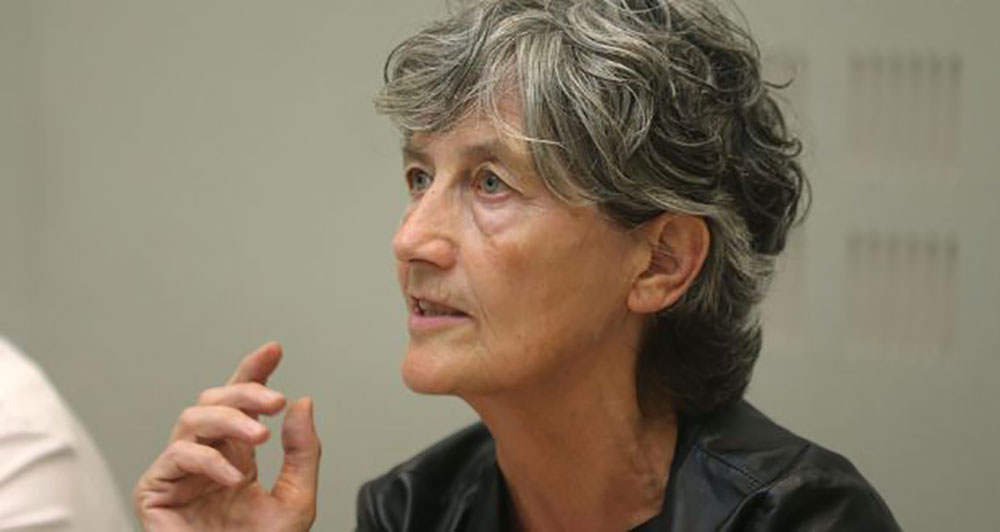
Assurance of anonymity crucial to encouraging survivors to tell their story.
“I’ll take this to the grave with me,” the man said. He was determined to do this, he said, referring to his own children, so as “not to shatter their lives”.

Born in a mother and baby home in the 1960s, he had such strong feelings about his past that he had not shared any of the details with his children, and he did not intend to do so.
Yet he had come before the confidential committee, set up by the Commission of Investigation into Mother and Baby Homes, to tell his story to strangers.
In turn, they gave him a commitment that they would keep his identity secret. One member of the confidential committee and a note-taking researcher met with him, and every other witness.
They were not required to take the oath, and they were told their evidence would not be challenged. “We promise you will remain anonymous,” the witnesses were told, in a leaflet produced by the commission.
An anonymised report of what was said by the witnesses was filed by the committee to the commission, and it formed part of the commission’s overall report.
In its final report in January, the commission made clear that witnesses were asked for permission to have evidence recorded as an aide memoire for the researcher, and they were told that recordings would be destroyed later.
“All such recordings were destroyed,” according to the commission’s report. This, however, has since become the focus of strong criticism from some politicians and activist groups.
The man who said he intended to take his story to his grave told the committee he had met his birth mother for the first time when he was 45 years old, had only met her again three or four times thereafter, and had not seen her for years.
“His own children, he said, were unaware he had been adopted, and he wanted to keep that from them, feeling it is still ‘a taboo subject’ and he doesn’t want to burden them with any stress, such as that he experienced when growing up,” according to the committee report.
Shocking
The stories recounted by the committee do not make for easy reading. The word “rape” appears with a shocking frequency, including rape by relatives, gang rapes, and rape by priests. Very often the victims are teenagers. The word “shame” litters the report.
However, some witnesses have now said, according to the chair of the Oireachtas Committee on Children, Sinn Féin TD Kathleen Funchion, that they were not told that recordings would be destroyed.
In the Dáil on Wednesday, and on radio, Galway West TD Catherine Connolly said there is nothing in writing to show that people were told the tapes would be destroyed. The Irish Times understands that this is indeed the case.
The leaflet given to people considering appearing before the confidential committee said this route might be suitable “if you wish to have your experiences heard in a sympathetic atmosphere by experienced people and you do not want any person or institution to know you are giving evidence to the commission”.
Similar structures were put in place for the Ryan Commission inquiry into institutional child abuse, which was established in 2000, and the Historical Institutional Abuse (HIA) inquiry, established in Northern Ireland in 2013.
The interdepartmental working group on Mother and Baby Homes, Magdalene Laundries and Historical Clerical Child Abuse, in Northern Ireland, which reported recently, was similarly organised, with people assured that no one apart from their interviewers “would learn the identity… of any interviewee”.
The HIA established an Acknowledgement Forum which operated in the same way. “All notes taken during the meetings were destroyed once the details were recorded in the forum’s secure database,” according to the forum’s March 2015 report.
The assurance of anonymity is an obvious way of encouraging people to tell stories that they would otherwise be loath to share.
Volunteered
There is nothing to stop people who volunteered to give evidence in such confidential circumstances from telling their stories in any other forum, including online, or through the media.
The confidential committee heard evidence from 549 witnesses, of whom 304 were mothers, 228 were babies/children, and 17 fell into other categories.
Since a new law was introduced in October, the witnesses can choose to have their names left on the records of their evidence.
To date, it is understood, approximately 75 people have said they want their identities to remain obscured, with the rest happy to have their names remain attached to material that will end up in the national archives. Most of the 75 are understood to be women who gave birth in the home, or were held there after they had given birth.
Under data access law, people will be able to seek access to their own documents after February 28th next, by which time the commission will have been dissolved, and its records moved to the Department of Children.
Even after the 30-year rule that governs the National Archives Act, the highly personal documents generated by the confidential committee’s work will most likely not become available to the public. They may be made available to academics on a restricted basis.
